Sophie Violet Gilmore – 13 June, 2014
Carr is concerned with the sensory detachment of spectatorship, where we consciously overlook or forgive the artifice of the moving images which bombard us in an obsessively digital era. The final work in the show, American Night, confronts this artifice through combining the image of a model bird against a highly stylized, colour saturated backdrop of nature. In it, the space of time between dawn and dusk passes in a fifteen minute cycle.
I had always been somewhat bewildered by video art in the past, but the examples of the medium I have encountered in the past year or two seem increasingly exciting, ambitious and thoughtful. The power of video art to be a mesmerising, spatially and cognitively transformative experience is shown in the succinct exhibition Stretching Time by Steve Carr, currently showing at the Dunedin Public Art Gallery. Auckland based artist Carr spent his time as Visiting Artist at the DPAG late last year, producing a series of two mesmerizing video works and one sculptural work. These are alternately visually monumental or subtle in effect.
The first, Range, is so restrained and unimposing that it could almost be mistaken for a piece of technical gallery apparatus. It is made out of a series of golf balls, experiments developed for elite competition, sliced in half and mounted in a grid composition on a single white wall. The static alignment of these unusual objects pieces has a scientific flavour in which the punctuating half-orbs with their containing layers of colour transform the wall itself into a complex visual field. The fluctuating interactions of colour between each circle have a stimulatingly optical quality, which call to mind the mysterious examinations of the optometrist’s office.
The work is full of interesting conceptual contradiction: in cutting apart the balls Carr makes objects created for movement entirely static, creating fixed, visual evidence of transient phenomenon such as speed and energy. Range sets up the experience of the rest of the exhibition in an interesting way, as it is essentially about revealing that which is concealed: in dissecting a seemingly mundane object Carr unveils an unexpected realm of complexity. This notion of revelation through dissection is entirely relevant to the two video works in which he emphasises and plays with the temporal conditions of the filmic medium, and in doing so reveals the artificialities and absurdities of this condition.
Transpiration is a hypnotic, 30 foot long video installation where enormous carnations are projected from six points onto perpendicular walls. The petals of these enormous but still delicate, old-fashioned, symbolically charged flowers, unfurl sporadically in a movement which can somehow only be glimpsed in peripheral vision, the only event occurring in the seamlessly cycling fifteen minute film. Their stems, in scintillating hues of mint green, pale pink and yellow, recede into fathomless blackness beyond each bud.
In their presence the viewer’s only task becomes detecting their movement; time evaporates into immeasurability. The decision to position the video in the corner of the room enhances the work significantly, transforming the space and creating an implicit vantage point. The detached position from which videos (whether art or not) are usually viewed, inside the limits of the screen, is removed, making the work highly immersive. If the video was projected around the entire room it would be saturating, but through the involvement of only two surfaces, it instead presents a compelling visual embrace.
The use of carnations here is significant. They have a culturally symbolic presence during life’s three main occasions: birth, death and marriage, and are exchanged in symbolic gesture at each. Carnations have an arbitrary yet ingrained meaning as a visual marker in such stages of a lifecycle, and are thus uniquely connected to the measurement of temporal progress.
The flowers, most importantly, allow Carr to comment on the odd capacity film has to embalm the objects it depicts in a historically non-specific moment. In film, movement and change are represented as constantly coming into being rather than as an event of the past. The carnations are eerie, not only because of their amplified scale, but because of the fact that while their physical referents have long since atrophied, their immaterial representations bloom perpetually.
David Lynch is prominently mentioned as an influence in the exhibition statement, (a director who seems to be mentioned a lot in relation to contemporary New Zealand artists; painter Peter Stichbury also discusses him). The dream-like (or nightmarish) aesthetic of Lynch’s work in films such as art-school favourite Blue Velvet (1986) does seem to seep into the subdued palette of Carr’s works, as the unfolding of the carnations within a dark void is both seductive and unsettling. However, it is interesting that the figure who seemed most useful in clarifying Carr’s work is a director of narrative film, rather than a video artist producing non-narrative work like Carr himself.
Carr is concerned with the sensory detachment of spectatorship, where we consciously overlook or forgive the artifice (particularly, temporal manipulation) of the moving images which bombard us in an obsessively digital era. The final work in the show American Night, displayed on a small screen tucked behind Transpiration on a specially built wall, confronts this artifice through combining the image of a model bird against a highly stylized, colour saturated backdrop of nature. In it, the space of time between dawn and dusk passes in a fifteen minute cycle. It is certainly humorous, playing on filmic clichés; it is also somewhat creepy. In adverse to Transpiration in which time is “stretched”, in American Night the passing of time is compacted to an absurd extent, where the visual signifiers of its passage (the red sky behind the bird meaninglessly signifies either dawn or dusk) become jarring and disorientating.
The space in which the video works are displayed, with its single, narrow entrance, darkness, and strategically placed seating, simulates the conditions of a cinema, in which the viewer is uniquely compelled to focus their attention on the images at hand. Nonetheless, it is still a gallery - unlike a cinema there is not one projector but many - and though each video work could cycle endlessly, the amount of attention the viewer pays to them is entirely a matter of feeling. Most gallery spaces attempt to be as neutral as possible, for instead of holding the viewer’s attention they encourage idle and unmediated wandering between the artworks.
However the way that Transpiration and American Night are displayed finds a compromise between these tendencies. Video art as a medium presents a complex intersection between film and the other arts, and through the display of two video works within an environment which (ironically) adapts conventions of the cinema to a gallery space, Carr presents an insightful and self-aware negotiation of this fact.
This is a spellbinding exhibition from an especially astute and thoughtful artist. Transpiration in particular has an arresting quality which verges on iconic. The confidently asserted title sets out to achieve a lot for an exhibition of only three works, but for a patient viewer content to sink into the artworks and let them unfold, time stretches entrancingly out of reach.
Sophie Violet Gilmore
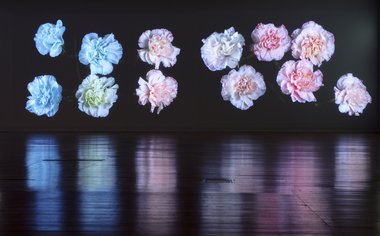
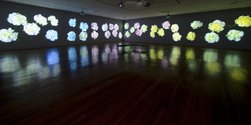


 Advertising in this column
Advertising in this column Two Rooms presents a program of residencies and projects
Two Rooms presents a program of residencies and projects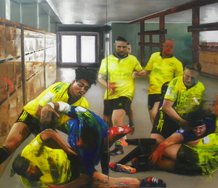
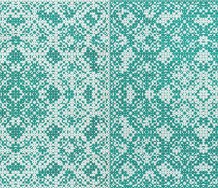
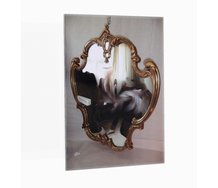
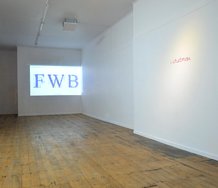
This Discussion has 0 comments.
Comment
Participate
Register to Participate.
Sign in
Sign in to an existing account.